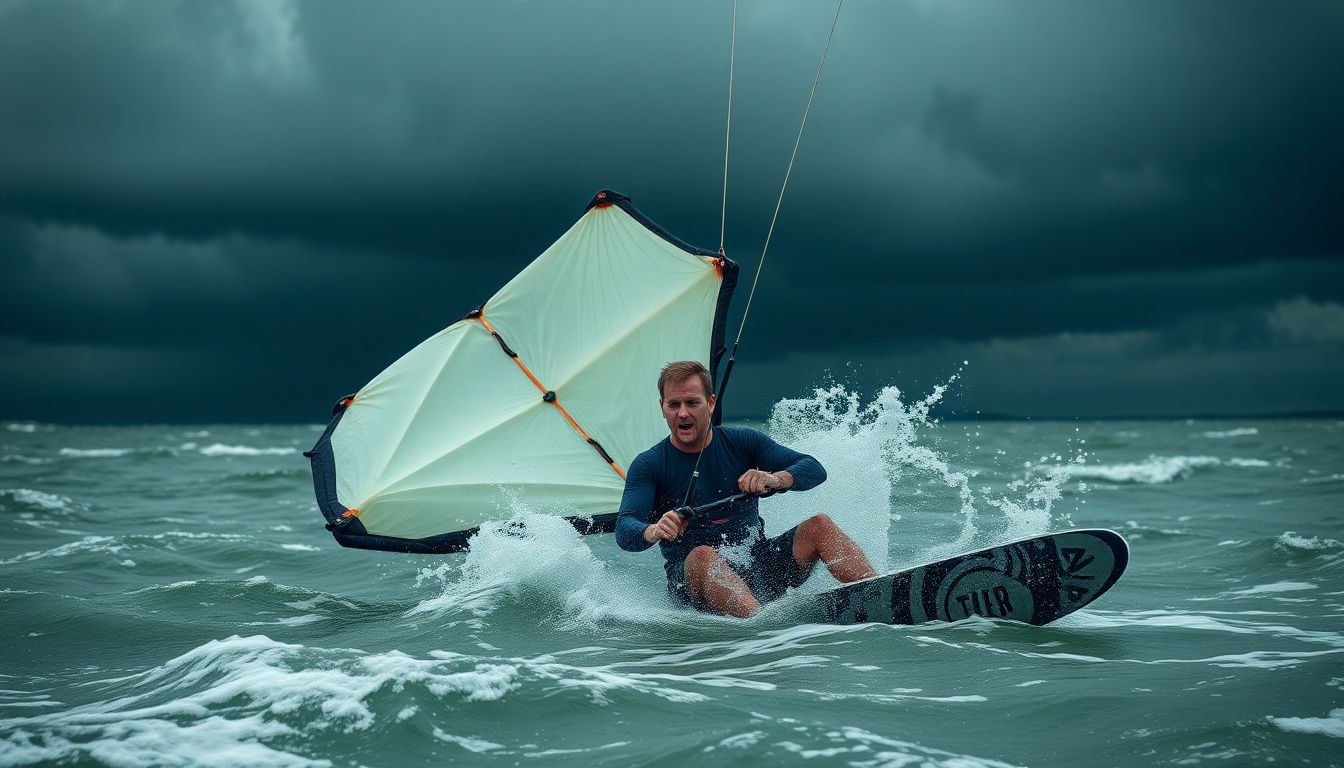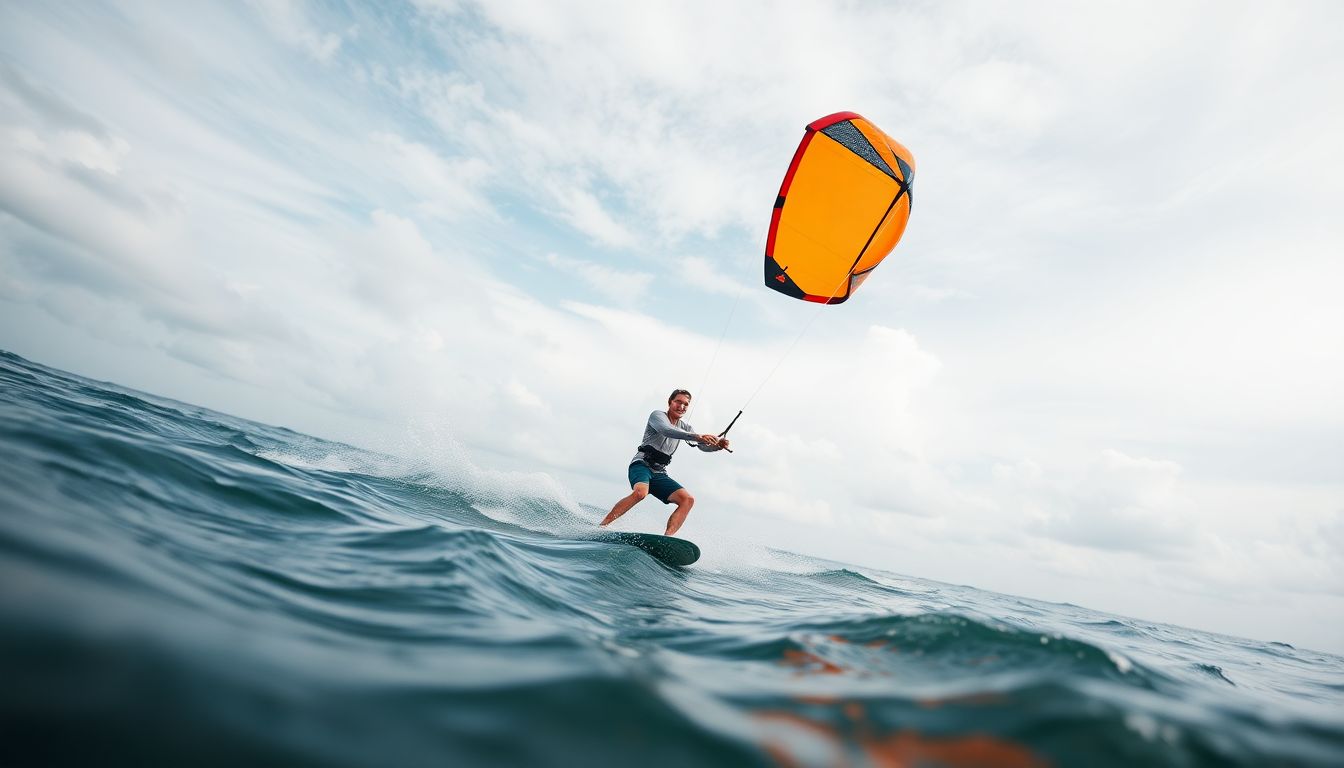The thrill of kitesurfing can turn into a nightmare in an instant. Imagine soaring above the water, only to be caught in a sudden gust of wind. Within seconds, you could find yourself tangled in lines or struggling to keep control of your kite. The joy of kitesurfing comes with certain risks that cannot be overlooked. With the rise in popularity of kitesurfing, understanding safety is essential. Taking proactive safety measures helps mitigate these risks and ensures a safer experience.
[Also see our article: A Beginner’s Guide to Choosing the Right Kitesurfing Gear].
Understanding the Risks: Assessing Wind, Water, and Equipment
Wind Conditions
Checking wind forecasts is crucial for safe kitesurfing. Unpredictable winds are a leading cause of accidents. Statistics show that over 30% of kitesurfing accidents occur due to sudden wind changes. Understanding local wind patterns helps you choose the right time and place to ride.
Water Conditions
Hidden currents and underwater obstacles pose serious dangers too. In 2020, a kitesurfer suffered severe injuries after disregarding strong currents and crashing into a reef. Always assess water conditions before heading out. Knowing the tide and checking for submerged objects can save lives.
Equipment Check
Before every session, inspect your gear. Check your lines, kite, board, and harness. Experts suggest performing a pre-ride inspection every time you go out. It only takes a few minutes to check for wear and tear that could lead to accidents. Equipment issues are responsible for nearly 25% of kitesurfing accidents.
Mastering Kite Control: Essential Skills and Techniques
Body Dragging and Self-Rescue
Mastering self-rescue techniques can be a lifesaver. Here’s a simple, step-by-step guide:
- Release the kite if you’re in danger.
- Use your board to help stay afloat.
- Body drag downwind to reach the shore safely.
Kite Relaunch
Knowing how to relaunch your kite properly is vital. Depending on conditions, relaunch can differ:
- Water: Pull on one side of the kite while ensuring it’s at a 45-degree angle.
- Land: Use your body to create tension and facilitate the lift-off.
Stay calm and avoid rush. Accidents can happen if relaunch attempts are hasty.
Emergency Procedures
In emergencies, quick action is necessary. Know how to release your kite quickly and safely. Statistics show that kite malfunctions lead to accidents 15% of the time. A prompt response can prevent serious injuries.
Choosing the Right Location and Time: Minimizing Environmental Hazards
Location Selection
Select kitesurfing spots wisely. Look for areas with consistent wind, ample depth, and few obstacles. For instance, beaches with sandbars are often better than rocky shores. Always scout the area before heading out to ensure it’s safe.
Optimal Time of Day
Timing matters. Kitesurfing during peak wind hours is often best. However, avoid early mornings or late evenings when winds can shift dramatically. Data indicates that over 20% of accidents occur during low visibility conditions.
Awareness of Surroundings
Stay aware of other water users. Boats, swimmers, and fellow surfers can create hazards. Keeping an eye on your surroundings can make a big difference in preventing accidents.

Partnering for Safety: Kitesurfing with a Buddy
Buddy System Benefits
Kitesurfing with a buddy enhances safety. It offers security and peace of mind. With a partner, you have someone to rely on in emergencies.
Communication and Support
Clear communication is key. Discuss roles before hitting the water. Knowing what each person will do during a situation helps both riders react quickly.
Emergency Response
Having a buddy can significantly improve response times during emergencies. Whether it’s a simple signal or analyzing the situation together, it’s vital for enhancing safety.
Protecting Yourself: Essential Safety Gear and Apparel
Helmet and Impact Vest
Wearing proper gear is essential. Helmets and impact vests prevent serious injuries. Studies show wearing a helmet reduces the risk of head injuries by up to 60%.
Harness and Leash
Properly fitted harnesses and safety leashes are crucial. They keep you connected to your gear, minimizing the risk of being thrown off balance.
Appropriate Clothing
Dress for the weather and water conditions. Wearing a wetsuit might be necessary for colder days, while lighter clothing could work on warm days. Not adapting to conditions can lead to hypothermia or overheating.
Conclusion
Safety in kitesurfing is paramount. Consistent checks of your gear, understanding environmental conditions, mastering self-rescue techniques, and using the buddy system are key takeaways. Prioritizing safety enhances enjoyment and reduces the likelihood of accidents.
Share your own safety tips and experiences in the comments below! Each insight can help create a safer kitesurfing community for everyone. For more see here.







